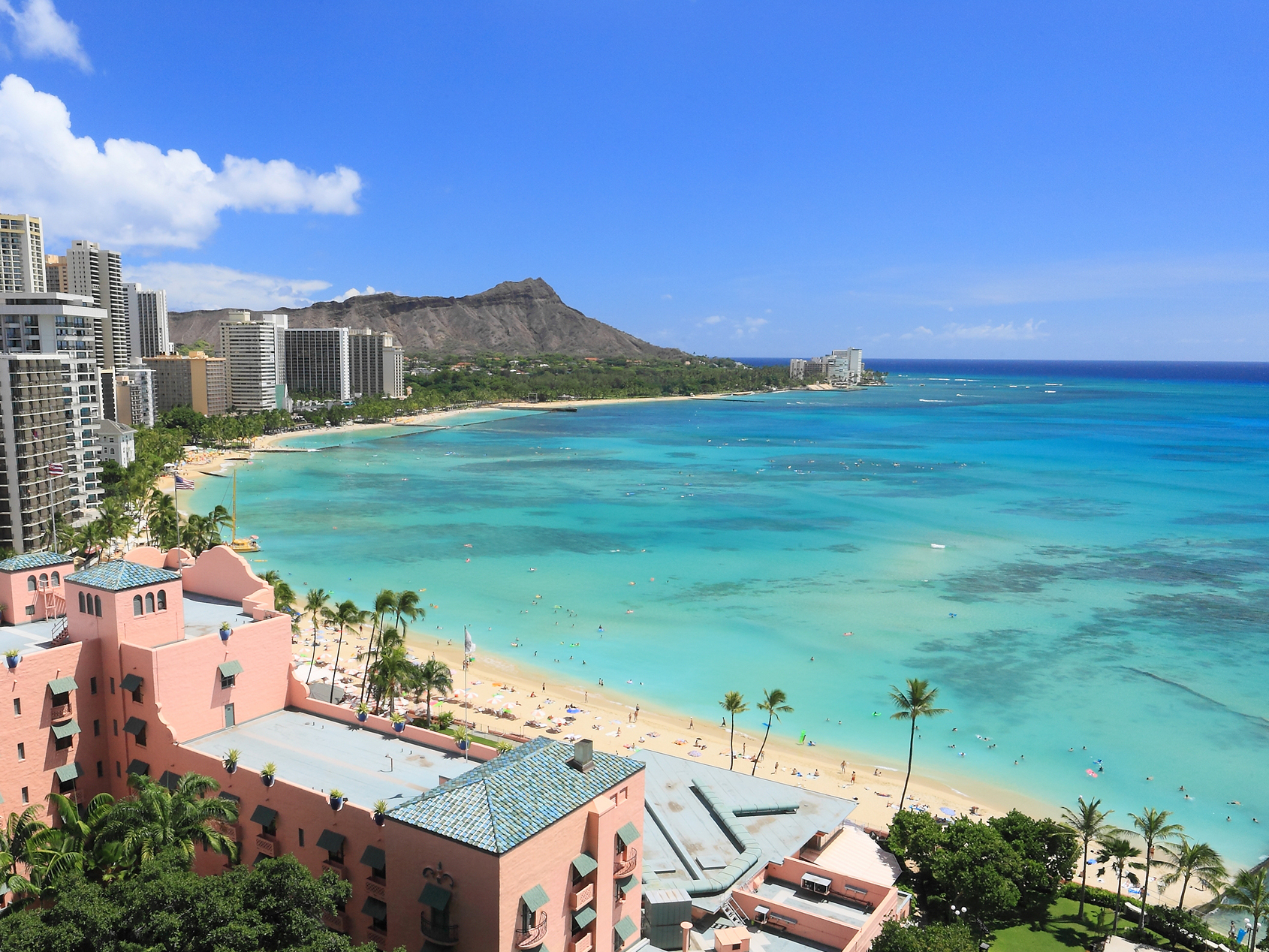- Hawaii, a popular tourism destination, receives upwards of 9.3 million visitors annually.
- But the iconic Waikiki Beach on the island of Oahu may soon be underwater: A 2017 report predicted that the tourist hotspot and the nearby city of Honolulu will experience regular flooding within the next two decades.
- Climate change is the cause of this unprecedented sea-level rise and subsequent flooding.
- Hawaii state officials have passed legislation that calls for a coastal protection program to help the city and its beaches avoid floods
- Visit Business Insider’s homepage for more stories.
Waikiki Beach, famous for its white sand, epic surf, and high-end boutiques, attracts visitors from around the world. But the longevity of this lucrative Hawaiian tourism spot is in question as sea levels rise.
In May 2017, high tides engulfed parts of the iconic Waikiki beach, edging dangerously close to waterfront hotels. This kind of high-tide flooding, often called a king tide or sunny-day flood, occurs when ocean water surges to higher levels than coastal infrastructure was designed to accommodate. In that case, water levels rose 2.5 feet above average in Waikiki, drowning nearby roads and sidewalks.
According to a 2017 report (which was updated in September 2018), Hawaii’s state capital and Waikiki Beach – along with other coastal strips on Hawaii’s five islands – are expected to experience frequent flooding within 15 to 20 years.
“This flooding will threaten $5 billion of taxable real estate; flood nearly 30 miles of roadway; and impact pedestrians, commercial and recreation activities, tourism, transportation, and infrastructure,” Shellie Habel, lead author of the 2017 study, said in a release.
Now, Hawaii state lawmakers are taking steps to shore up the state's beaches and coastal cities. A new bill that mandates a statewide shore protection program has passed both houses of Hawaii's state legislature, and will soon makes its way to the governor's desk for approval.

Chronic flooding will threaten roadways, buildings, and beaches
Hawaii has already seen over 6 inches of sea-level rise in recent decades, and the rate of rise is accelerating, according to state lawmakers.
The primary reason sea levels are getting higher is that water (like most things) expands when it's heated. Even small changes in temperature result in a large increase in water volume. Oceans absorb 93% of the extra heat that's getting trapped on Earth due to the greenhouse gas human activity has sent into the atmosphere. That has led oceans to heat up 40% faster than experts previously thought; 2018 was the warmest year on record for the oceans.
If greenhouse gas emissions continue to increase, sea levels worldwide could rise a full foot by 2100.
But that's an average. For Hawaii, according to the 2017 report, that will mean a 3-foot rise in sea levels by 2100. Such a change would threaten more than 6,000 buildings and 20,000 people with chronic flooding across the five islands. As the AP reported, those numbers likely underestimate flood-prone areas by up to 54%.

In a state heavily reliant on beach tourism - Hawaii gets 9.3 million visitors annually - coastal flooding could be a death knell.
"The latest data on sea level rise is quite scary and it's accelerating faster than we ever thought possible," Hawaii state Rep. Chris Lee told the AP.
A new bill calls for a coastal protection program
Lee is the lead author of a new bill that calls for a shoreline protection plan that would "protect urban Honolulu from the impacts of sea-level rise, floodwater, storms, and other impacts of a rapidly changing climate." The bill would also set aside funds for research into a statewide carbon tax.
According to the AP, both Hawaii's state Senate and House of Representatives passed a version of Lee's bill, and it's expected to be sent to Gov. David Ige in the next few weeks.

The measure calls for $4 million to fund a pilot project focused on protecting Honolulu's shoreline over the next two years. The project would divide Honolulu into different "protection compartments" connected by a shoreline pathway. Each compartment would be required to build coastal parks, implement flood-protection zones, and plan to be self-sufficient in the event any compartment gets cut off from its neighbors during a storm or flood.
After the pilot project, similar plans would get implemented in other coastal communities throughout Hawaii.

